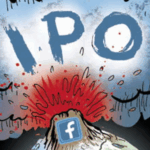 “On TV And Video” is a column exploring opportunities and challenges in programmatic TV and video.
“On TV And Video” is a column exploring opportunities and challenges in programmatic TV and video.
Today’s column is written by Randy Cooke, vice president of programmatic TV at SpotXchange.
If you’re in the TV business, you’re painfully aware of how quickly things are changing. Less than a decade ago, TV was its own self-contained ecosystem with predictably stable audiences and a relatively clear-cut blueprint for delivering advertiser value.
Digital and mobile video, streaming video on demand, video on demand and time shifting have encroached on what was once a foundation upon which brands were built. Things could get even more complicated in the next couple of years.
Many in the industry talk a lot about “convergence,” where the monetization of TV and online video audiences are transacted within the same platform, with equitable rates and a singular currency to benchmark achieved value. While speculation on TV’s future occasionally borders on hyperbole, this transformation is very similar to change the telecommunications industry went through two decades ago.
The local number portability provision of the Telecommunications Act of 1996 allowed consumers to keep their phone numbers when they switched carriers. Based on recent signals from the FCC, the liberating equivalent may be coming to TV, nearly 20 years after telecom’s transformation.
Thanks to FCC 14-210, cable, satellite and telco companies are about to see a lot more competition from the likes of Netflix, Roku, Amazon, Google and Apple. Connected device manufacturers, such as Vizio, Sony, Samsung and LG, could also enter the fray.
There are two aspects here that are noteworthy. For the first time, the FCC has defined “linear” programming, something that has been taken for granted since the advent of television. Second is the classification of a multichannel video programming distributor (MVPD).
These changes are transformational and disruptive. No longer do you need a broadcast tower or a cable plant to distribute content. Internet-based video providers can easily provision linear streams and, subsequently, conform to the FCC’s definition of a linear programmer.
Virtually every new device purchased from now on will be Internet-capable. Whether it’s a smartphone, multimedia device, desktop, tablet, gaming system or smart TV, it will be a gateway to whatever video service you want. The FCC’s new definition of MVPD means that the cable company can be whomever you want it to be, on whichever devices you prefer, wherever you go.
A new TV or next-gen gaming system could have its own “cable service” from the manufacturer, complete with local channels and no more technicians scheduling installations between the hours of 10 a.m. and next Thursday.
Devices offering incumbent video services will have a distinct advantage in this brave new world of content distribution. Manufacturers are eyeing both subscription and ad revenues in the face of shrinking margins on new devices.
Things could get very interesting very fast. If history repeats itself, two winners will emerge from the content distribution race, much like what happened in telecom. The first will be infrastructure-based distribution services that will squeeze out business models built around content curation alone. These are providers that own or possess exclusive licenses to devices, managed networks or spectrum.
The second winner will be the consumer. Irrespective of how content is distributed, the demonstrable thirst for an affordable, customized viewing experience already exhibited by the modern consumer may finally be quenched in the very near future.
Follow SpotXchange (@SpotXchange) and AdExchanger (@adexchanger) on Twitter.













